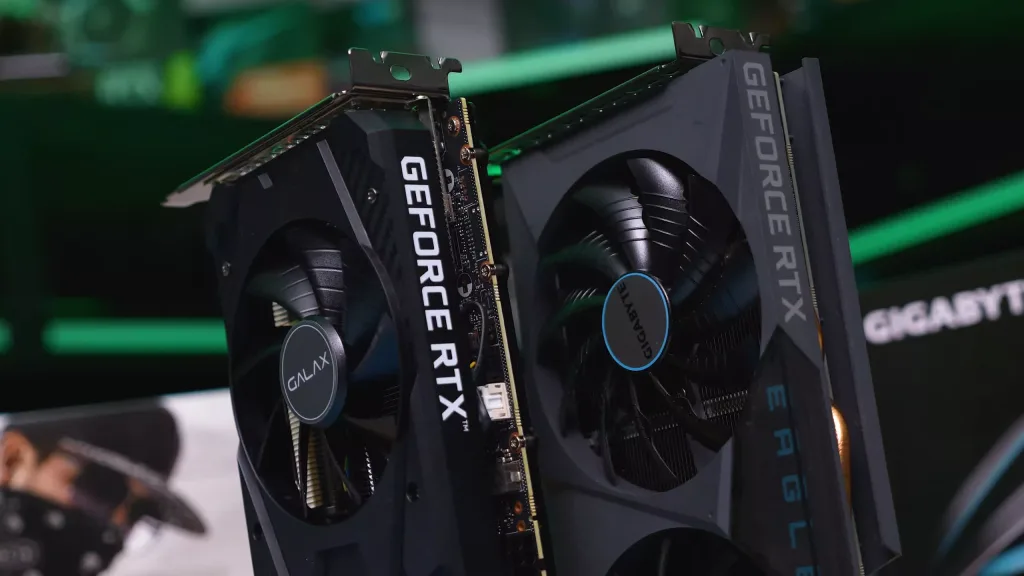Nvidia GTX 1080 Ti is similar to the performance of an RTX 3060, RTX 2070, or an overclocked AMD RX 6600. The RTX 2060 Super is not as fast and powerful. However, that’s not the full story. Apart from being more expensive and power-hungry, the GTX 1080 Ti lacks hardware-accelerated ray tracing and cannot use DLSS (though can make up for it with FSR 2.1 for a significant improvement even at 1440p).
This is a GPU comparison. Read all our comparisons between popular graphics cards since 2016.
Let’s talk about the 3 things you should know before we talk about performance:
- Price: The GTX 1080 Ti is generally more expensive than the 2060 Super, so if the price is a major consideration, the 2060 Super may be the better choice.
- Power consumption: The GTX 1080 Ti draws more power than the 2060 Super, so if power efficiency is a concern, the 2060 Super may be the better choice.
- Future-proofing: The 2060 Super is a newer card and has support for newer technologies like ray tracing and DLSS, which may make it a better choice for future-proofing your system.
Performance comparison


While the GTX 1080 Ti is a slightly older card, it still generally performs better than the 2060 Super in terms of raw performance. However, the 2060 Super has some advantages such as better ray tracing performance and support for newer technologies like DLSS.
If you’re going to play AAA games that look stunning with true hardware-accelerated ray tracing, there’s no reason why you should ever pick the GTX 1080 Ti.
In raw performance, the GTX 1080 Ti is faster on all games except when you take DLSS into account. The RTX 2060 Super can use Nvidia’s DLSS 3.0 technology which isn’t supported by any Nvidia 10-series card, to upscale lower-resolution renders to give higher framerates.
The 1080 Ti can still use FSR 2.0+ which is comparable to DLSS. I’ll leave it at that. The details of the actual pros and cons of FSR 2.1 vs. DLSS 3.0 are enough meat for a separate article. That means the 1080 Ti is a very capable 1440p gaming GPU.
The 3GB more VRAM you get (2060S 8GB vs. 1080 Ti 11GB) is the icing on the cake.


Both the GTX 1080 Ti and the 2060 Super are high-performance graphics cards, but the 1080 Ti is generally considered to be the more powerful of the two. It has more CUDA cores, higher clock speeds, and a wider memory bus, all of which contribute to better gaming performance.
However, the 2060 Super is a newer card and has some advantages, such as better power efficiency and support for ray tracing technology.
Final verdict
The GTX 1080 Ti provides excellent value to this day. As long as you’re not after the best quality ray-traced environments, the 1080 Ti is what I’d recommend you to go with. I’m speaking from more than nostalgia.
The OG “Titan X killer” GPU is simply a classic example of the good old graphics card days when Nvidia wasn’t milking their cows too hard. In comparison, the RTX 2060S might be 2 years and 4 months newer but is the standard entry-level card.

I’ll not lie and make it sound like the 2060S is way worse in performance. It’s not. Though the 1080 Ti compares to the 3060 and 2070, the 2060S is not much behind all of these. Plus, it has DLSS and RT cores which can change the game wholly under some circumstances.
Ultimately, it depends on what games you will be playing and your budget.





